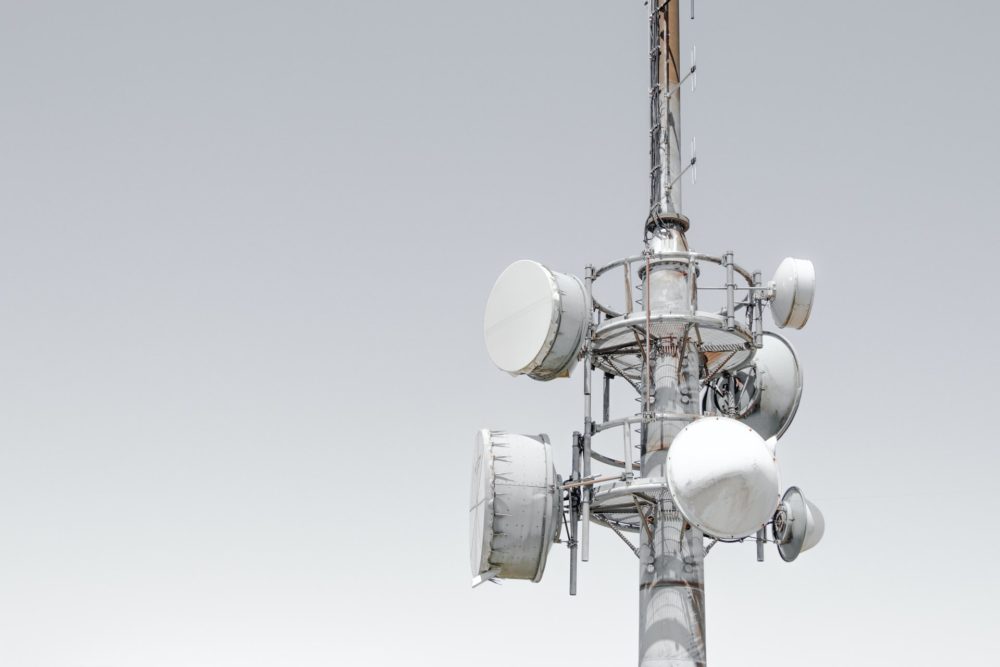Space communication technology: Between spacecraft and the earth, among two or more sites on the earth through spacecraft or artificial means stationed in orbit (a belt of needle, a cloud of ionised ions, and so on), as well as between two or even more spacecraft. Telemetry, telephone, telegraphs, televisions and other information, command and control signals, and trajectory measurements are only some of the uses for space communications systems, which are extensively employed. The most common use of radio communication is in satellites in orbit.
Constant, often rapid, movement of a spacecraft, the need for current coordinates of a spacecraft and antennas aimed at a specific spacecraft, and the Doppler effect’s continuous frequency shift are the main characteristics of space communication networks that differentiate those from Earth communication networks. For this reason, unique systems were developed that included complicated equipment such as huge guided antennas and low-noise reception devices, as well as systems for detecting, classifying and storing radio signals.
Periodic measurements of spacecraft coordinates and estimates of the spacecraft trajectory are necessary in order to determine the present location. Such systems typically include a trajectory-measuring device, an operational computer, and a control system for a spacecraft. Depending on the routing and purpose, several frequency bands are employed for the radio frequencies of space communication network. Radio space communication technology rules dictate how and when they are used.
 Satellite Communications
Satellite Communications
Line-of-sight microwave lines are often used for long-distance communication, with two output stations and a number of intermediary repeater stations divided by direct line of sight distances (50-70 km). It is possible to communicate between two locations thousands of kilometres apart if a repeater is mounted on an earth – orbiting satellite in a high orbit. If both sites are able to view the satellite at the same time, the direct communication range is limited. Such satellites may be used to broadcast television programmes, multi-channel telegraph and telephone signals, and other types of information in both individual communications connections and networks of microwave links. Among the networks with a considerable number of Stations is indeed the Orbita system, that has been functioning throughout the Soviet Union from 1967. For communication, satellites in various orbits and altitudes might be employed. Circular stationary, highly large elliptical synchronous orbit, medium-high circular, and low circular orbits are the most common orbits for space communication technology satellites.
For example, Intelsat is hung above the equator and offers 24-hour communications with Earth stations in latitudes of less than 75° and a range of 8,000 km to the place on which satellite (for example) is positioned (the equator). For every earth station within the latitude range, three such satellites may be positioned at equal distances from each other. An apogee above the centre of the serving link as well as an orbital period of up to 12 hours are best suited for locations with latitudes above 70°-75° north latitude. To ensure that a certain area may be observed for long periods, the satellite’s orbital apogee and degree of inclination must be chosen carefully.
Earth stations using a satellite in an elliptical or stationary orbit must employ large antennas due to the long distance and poor signal strength of a transmission from the satellite. With the Kur’er and Rele satellites in moderate and high circular orbits, the received signals are much more powerful. It is necessary to expand the number of satellites in order to maintain continuous communication, yet a fall in flight altitude reduces mutual visibility between satellites and earth space communication technology stations.
As a result, the earth station tracking and antenna guiding system becomes a lot more difficult. For flights at low altitudes, direct contact between distant places is impossible, hence a system of radio connections, with delayed relaying, is required. Even tiny, transportable earth stations can communicate with low-flying satellites thanks to appropriate signal levels, therefore huge antenna systems are unnecessary in this scenario.

There are only a finite number of links that an operational repeater can support; in order to minimise interference and keep the needed level of signals from overloading its repeater, frequency and temporal separation, as well as the usage of coding, must be utilised to keep signals separate. Although active repeater systems, such as the Intelsat, Molniia, and Syncom satellites, offer simultaneous broadcast of information across multiple (up to 10) tv stations or several thousands telephone channels, are the most common.
A link’s passband must be increased in order to save money because of the usage of multichannel radio communication networks. Television signals need a broad passband for transmission. As the passband widens, so does the potential for interference to alter the communications. As a result, the feedback of messages with appropriate deformations is the most essential problem that can be fixed by enhancing the ability of the radio signals, selecting the interaction frequencies, reducing the sound level of a radio receivers, using efficient programming, and by selecting the type of regulation, reception, and handling for radio transmissions with a low SNR ratio of space communication technology.
Low-noise subatomic and parametric amplifier cooled by liquid helium are used in the earliest stages of a earth stations’ reception amplifiers to removal from space noise and atmospheric noise, respectively, which are both greater at higher frequencies.
It is necessary to increase the transceiver power and transmitter size of a earth station and reflector size of the repeater, or use repeaters with dimensional scattering of the energy towards to the earth station, in order to provide a sufficient level of receiver end in network communication with a passive repeater. It is difficult to implement such procedures due to the high cost of the communication connection and its operation.
Earth-To-Space Communications Technology
Two-way communication systems between Earth and a spaceship are intended to transmit all relevant information in both directions. The daily rotation of the earth determines the shift in direction between both the spacecraft and a point on the earth, therefore communications with far spacecraft (unpiloted interplanetary probes) are characterised by extremely low received radio signal levels and lengthy intervals of mutual visibility. There is a high level of radio signals and quick changes in the route of communication in contacts with nearby spacecraft (earth – orbiting satellites, crewed spacecraft, and manned orbital space stations).

Space communication technology is the primary mode of data transfer, however. In order to receive data a interplanetary spacecraft, ground stations must utilise antennas with extremely large effective areas (hundreds or thousands of square metres) at ground stations, since the strength of the received signal drops as a square of the distance.. Unique, costly antenna systems are required to provide effective coverage areas of 2,000-5,000 square metres, which will allow for telephone connection beyond interplanetary distances.
After the Vostok cosmonaut became the first person ever to orbit the Earth in 1961, he maintained two-way telephone-telegraph connection with the ground on metre and decametric wavelengths. Later human spacecraft missions of Voskhod and Vostok enhanced radio connection with Earth and tested it successfully in group flights between spacecraft. The first television picture from cosmonaut G. S. Titov is beamed from orbit to Earth during in the Vostok 2 trip in August 1961. The frequency band was narrowed by reducing the number pf frames per second from 30 to 10 for transmission of the television picture. Later, it became feasible to utilise tv systems with the standard definition.
Unmanned interplanetary probes accomplished the largest radio communication distance. Earth-to-probe communication ranges for Mars missions and Jupiter flights, respectively, were 800 million – 900 million kilometres and 350 million kilometres, respectively. An antennae on the probe pointed towards the Earth is often employed to facilitate long-distance space communication technology
Communication Between Spacecraft
When two or more spacecraft are in orbit at the same time, or when spacecraft and cosmonauts are separated by a great distance, communication between them is essential. It is also possible to establish communication between the two unmanned spacecraft in order to transmit signals, location measures and navigation, flight, and rendezvous data. In terms of spacecraft-to-spacecraft communication, the following qualities stand out: between artificial earth satellites, non-directional communication is preferred due to difficulties in aiming antennae; the absence of atmospheric effects and, in geostationary orbit, ionospheric effects allows for a freer selection of frequency band and use of optical communication system amenities; possible intervention from powerful earth stations is a concern. As space missions land on the moon or other celestial bodies, space communication technology become more complicated due to the need to maintain communication between both the expedition as well as the spacecraft, which stays in circumplanetary orbit, and between the mission and the planet.




 Satellite Communications
Satellite Communications